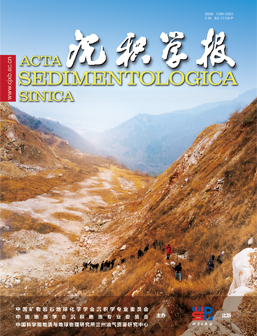Building a Digital Outcrop Model Based on Laser Intensity and Its Application: A Case Study of the Gaojiashan Dengying Formation in Ningqiang, Shaanxi
doi: 10.14027/j.issn.1000-0550.2025.040
- Received Date: 2025-03-20
- Available Online: 2025-11-18
-
Key words:
- Digital Outcrop /
- Laser Scanning /
- Gaojia Mountain /
- Lamp Shadow Group
Abstract: Abstract: [Objective] Carbonate outcrops are often affected by tectonic fragmentation, weathering, and vegetation cover, making it difficult to obtain complete and precise sedimentary and reservoir characteristics by traditional field survey methods. This study introduces terrestrial laser scanning (TLS) to address the challenges in high-resolution characterization of carbonate outcrops, improve lithofacies recognition accuracy, and explore its applicability in sedimentology and reservoir studies. [Methods] Taking the Gaojiashan section of the Dengying Formation in Ningqiang, Shaanxi as an example, high-precision point cloud data were acquired using TLS, and laser intensity information was analyzed quantitatively and qualitatively. Three-dimensional digital outcrop models were constructed through point cloud modeling and texture mapping. Combined with thin-section petrography, rock physical property tests, and field sedimentological investigations, lithofacies recognition, sedimentary facies classification, and depositional model reconstruction were carried out. [Results and Discussions] (1) A high-resolution digital outcrop model was established, which enables full-coverage 3D visualization and interactive analysis of the outcrop, allowing geological features such as lithology and stratigraphic geometry to be accurately preserved and studied. (2) A lithology recognition atlas based on laser intensity was established, clarifying the intensity features and thickness proportions of different lithologies within the profile. Dolostone facies such as algal dolostone and crystalline dolostone correspond to high laser intensity and relatively high porosity–permeability values, while micritic dolostone and argillaceous dolostone correspond to low intensity and poor reservoir quality, indicating a good correlation between laser intensity and reservoir properties. (3) Using the upper sub-member of the second member of the Dengying Formation as an example, sub-layer division was refined based on laser intensity, and the geometric characteristics of the 14th sub-layer were deeply characterized. Analysis of depositional patterns indicated that variations in laser intensity are closely related to sea-level fluctuations, revealing cyclic depositional evolution. [Conclusions] The integration of TLS with traditional geological methods provides a more intuitive representation of carbonate outcrop features and effectively preserves primary field data. The digital outcrop model established in this study offers valuable data support for hydrocarbon exploration and reservoir evaluation, demonstrating the broad prospects and significant potential of TLS applications in geological research.
| Citation: | Building a Digital Outcrop Model Based on Laser Intensity and Its Application: A Case Study of the Gaojiashan Dengying Formation in Ningqiang, Shaanxi[J]. Acta Sedimentologica Sinica. doi: 10.14027/j.issn.1000-0550.2025.040 |






 DownLoad:
DownLoad: